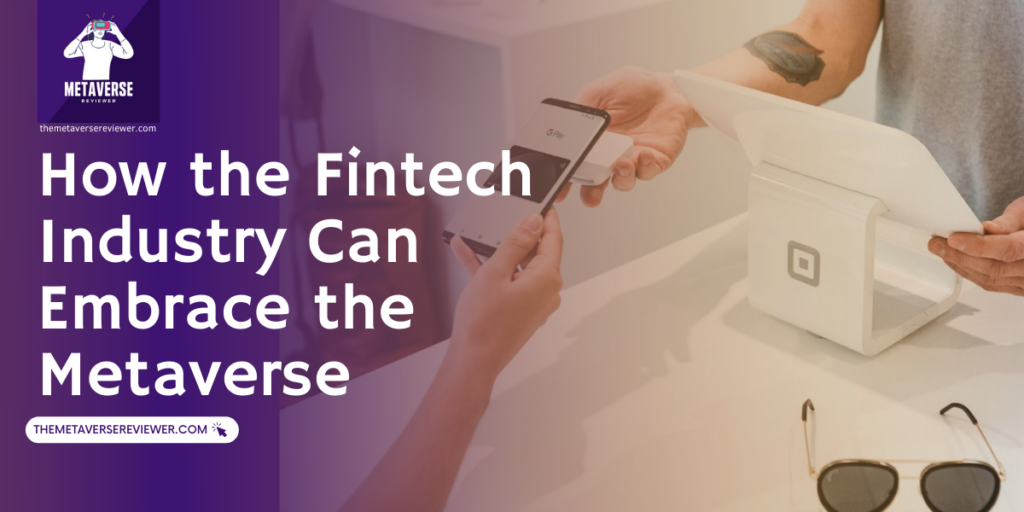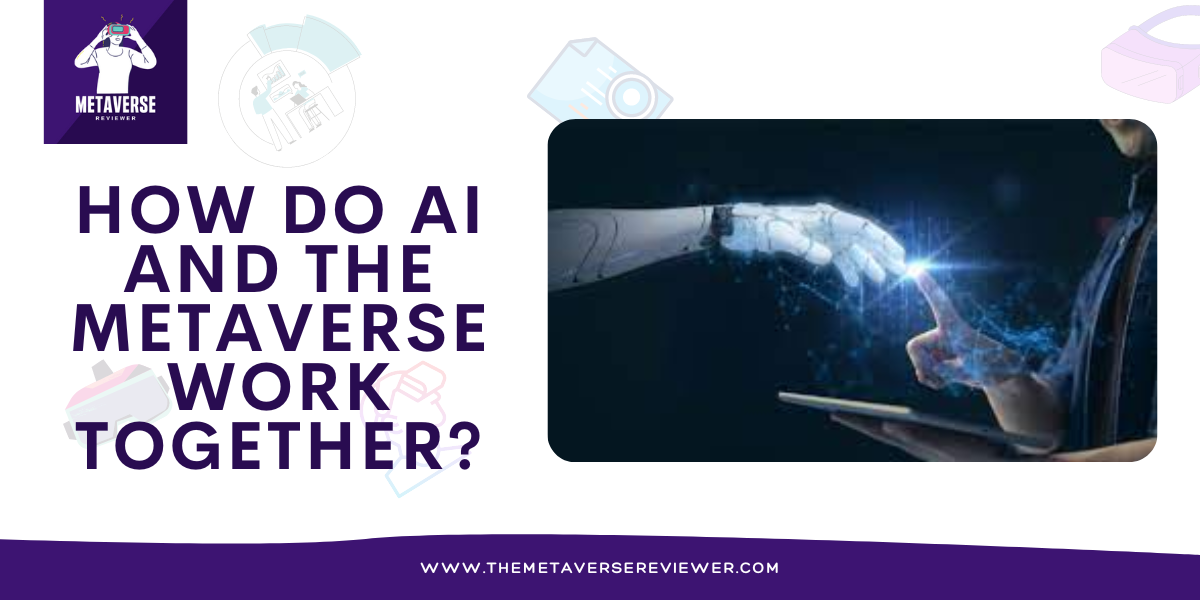In a matter of a few months, the financial world as we know it has been turned on its head. The arrival of the Metaverse, a virtual universe filled with endless possibilities, although yet in its infancy, has opened up a new world of opportunities for various industries, including fintech. As technology continues to advance at a rapid speed, investments in Metaverse fintech continue to flow massively. In 2022 alone, the global Metaverse market size was estimated at USD 61.8 billion. That same year, the fintech global industry reached US$ 158.9 billion. If these two industries merge or, better said, when they merge, the impact on the global financial system will be colossal, and the resulting financial landscape could be transformed in ways we can only imagine.
Metaverse and Fintech
When fintech intersects with the Metaverse, it sparks a transformative wave of innovation in the realm of digital finance and virtual money matters. Just imagine – a whole new world of buying, selling, and investing opportunities, all at our fingertips. Not only does it make the world of finance more approachable and fun, but it also adds an extra layer of security. We’re already witnessing the birth of virtual economies and decentralized banking systems that break free from traditional chains. The future is knocking on our digital doorstep, and it’s about time we let it in.
Let’s have a closer look at the endless possibilities this new financial revolution could bring:
Decentralized Finance (DeFi) Integration – The Metaverse can serve as a hub for Decentralized Finance (DeFi) platforms, allowing users to access a plethora of financial services like lending, borrowing, and trading without the need for traditional intermediaries. Incorporating DeFi into the Metaverse can enhance financial inclusivity, giving people from all walks of life access to financial tools and services previously reserved for the privileged few.
Virtual Banks and Financial Institutions – Imagine a world where you can walk into a virtual bank and interact with a digital representative for all your financial needs, from opening accounts to applying for loans. This means no need for physical presence, commuting, or waiting in a queue to be served while unlocking new possibilities for enhanced convenience and accessibility in the financial sector.
JP Morgan, the largest U.S.-based bank, is the first bank to enter the Metaverse and set up a branch in Decentraland. In their research paper, they outlined their plans to emulate real-world banking operations within the virtual space, which could facilitate cross-border payments, foreign exchange, financial assets creation, trading, and safekeeping. Similar to JP Morgan, DBS, Caixa, Bank of America, and HSBC, are also experimenting with the Metaverse. And this is only the beginning, as more banks are expected to adapt to this new financial landscape and respond with change.
Here are some key factors behind such a transition from traditional banking to virtual banking offerings:
24/7 Banking: customers can manage their finances at any time they need, according to their schedule.
Cost-effective: With reduced overheads, this could mean competitive interest rates, lower fees, and cash-back incentives, ensuring customers maximize their savings.
Easy Accessibility: readily available via smartphones and computers, allowing users to access their accounts from anywhere.
Time-saving: the need for visiting physical branches is eliminated, helping customers conduct transactions and manage their finances more efficiently.
Eco-friendly: clear and greener environment through minimization of paper usage and physical infrastructure.
Enhanced Security: state-of-the-art security measures, such as biometric authentication and encryption, to safeguard customers’ sensitive data.
Customized Experience: personalized financial services and tools to cater to each customer’s unique needs, providing a tailored banking experience.
Global Reach: simplified cross-border transactions and currency conversions, allowing customers to transact with ease worldwide.
By establishing virtual branches in the Metaverse, banks and financial institutions can provide customers with personalized, immersive experiences, reducing the need for physical branches and lowering overhead costs.
Digital Asset Management and Investment Platforms – The Metaverse offers a unique opportunity to create and manage digital investment portfolios, with users being able to invest in various digital assets such as NFTs, virtual real estate, tokens or cryptocurrencies, games, or even shares in virtual businesses. This new form of asset management has the potential to democratize investing and create an inclusive financial ecosystem for users across the globe. Acquiring shares in the Metaverse requires a digital wallet and the ability to participate in the currency exchange.
Enhanced Financial Education and Training – By leveraging the immersive environment of the Metaverse, financial education and training can become more engaging and interactive, with users being able to participate in simulations and learn from real-world scenarios.
By leveraging virtual reality and gamification, banks can develop engaging educational programs that cater to different learning styles and skill levels. For example, virtual banks could offer interactive workshops or simulation-based learning experiences or games where users can practice making investment decisions, managing budgets, or navigating complex financial scenarios in a risk-free environment. This can lead to improved financial literacy and a better understanding of complex financial concepts for a wider audience.
Metaverse Wallets
Metaverse wallets are an essential component of the Metaverse fintech ecosystem in the virtual world. Acting as a secure digital storage system for various digital assets and currencies, these wallets enable users to manage, trade, and utilize their digital wealth seamlessly. Metaverse wallets can store a wide range of assets, including cryptocurrencies, NFTs, virtual real estate, and other digital collectibles.
Security is a top priority when it comes to Metaverse wallets, and they often employ cutting-edge encryption and authentication technologies to ensure the safety of users’ digital assets. For added protection, some wallets may even incorporate biometric authentication methods, such as facial recognition, fingerprint, or iris scanning.
Integration with various financial services and platforms is another crucial aspect of Metaverse wallets. By connecting users to a multitude of financial services, such as DeFi platforms, virtual banks, and digital asset management systems, Metaverse wallets can help users navigate the intricate web of the virtual financial ecosystem effortlessly.
Here’s a list of the most popular Metaverse wallets in 2023:
Metamask Wallet
Featuring the familiar Metamask fox logo, Metamask is probably the most popular digital wallet that can be accessed as a browser extension. As one of the top Metaverse wallets, Metamask allows users to set up multiple addresses for holding NFTs or even a single address for all NFTs and Metaverse tokens. Offering secure connections to decentralized applications through its built-in mobile browser, Metamask lets users explore Ethereum-based dApps without the need for full Ethereum nodes or clients.
Coinbase Wallet
Coinbase Wallet is another popular choice among digital wallet users. Many enthusiasts in the crypto world prefer it for trading their cryptocurrencies, and it’s a great fit for storing NFTs and Metaverse tokens. The easy-to-use wallet gives users full control over their crypto assets and smoothly links up with exchange accounts for fuss-free transfers. Offering secure local storage for NFTs and Metaverse tokens, Coinbase Wallet is a top pick for those who want a wallet that’s directly connected to an exchange, like Coinbase itself.
Enjin Wallet
Enjin Wallet is a top contender for the best Metaverse wallet title in 2023. As a leader in the in-game NFT space, Enjin offers a convenient solution for collecting NFTs and other in-game collectibles. Its marketplace allows for trading digital assets using ENJ, the Enjin token. Boasting a well-designed user interface, early access to DeFi and metaverse projects, and easy-to-use features, Enjin Wallet is an excellent choice for gamers and collectors alike.
Metaverse wallets are an integral part of the financial ecosystem within the virtual world. They act as a bridge between users and the various financial services available in the Metaverse, enabling seamless management and transactions involving digital assets and currencies. The growing connection between Metaverse wallets and finance stems from the increasing adoption of digital currencies, the prevalence of decentralized finance, and the rising interest in digital asset investment and management.
As the fusion of fintech and the Metaverse continues gaining traction, Metaverse wallets will
evolve and become indispensable tools for individuals and businesses. The possibilities for innovation are endless as wallet providers strive to offer more advanced features, seamless user experiences, and robust security measures to stay ahead in the competitive landscape.
The role of cryptocurrencies in the Metaverse fintech scene
Cryptocurrencies have burst onto the metaverse fintech scene, transforming the way we interact with virtual worlds and digital assets. As the backbone of the metaverse economy, cryptocurrencies enable users to buy, sell, and trade virtual goods, like NFTs, in-game items, and digital real estate. This has given rise to a flourishing virtual economy, where users can earn, spend, and invest their digital currencies in ways that were once the stuff of science fiction.
One of the key roles cryptocurrencies play in the Metaverse is powering the decentralized finance (DeFi) ecosystem within these virtual worlds. Crypto-based DeFi platforms have the potential to redefine the financial landscape of the Metaverse, offering financial services like lending, borrowing, and trading without the need for traditional intermediaries like banks. This not only makes financial transactions more efficient but also opens up new opportunities for users to participate in the Metaverse economy, regardless of their real-world location or socioeconomic status.
Additionally, cryptocurrencies are vital in facilitating cross-platform transactions within the Metaverse. As the Metaverse expands and becomes more interconnected, users may want to seamlessly move their digital assets and currencies between different virtual worlds and platforms. Cryptocurrencies provide the necessary infrastructure to support these cross-platform transactions, ensuring that users can enjoy a smooth, frictionless experience as they navigate the diverse landscape of the digital world. In short, cryptocurrencies are set to play a starring role in shaping the future of the Metaverse fintech scene, fueling innovation, and bridging the gap between virtual and real-world economies.
Fintech Customer Case via the Metaverse
As we delve into the world of fintech and the Metaverse, we uncover groundbreaking Metaverse fintech use cases that demonstrate the synergy between these two rapidly evolving domains. In this section, we’ll explore how fintech companies are leveraging the digital world to create immersive experiences, drive innovation, and redefine the future of finance, by looking into these two uses cases:
Case 1: Virtual Bank Branch in the Metaverse
Looking to extend its reach and enhance customer experiences, a bank decides to leverage the Metaverse and open a virtual bank branch. Collaborating with a team of skilled developers, the bank can create an immersive environment that mirrors the aesthetics and functionality of its physical branches. Customers, through their avatars, could visit the virtual branch to conduct transactions, apply for loans, and access a range of financial services.
To elevate the customer experience, the virtual bank can integrate AI-powered chatbots and virtual assistants, providing instant support and personalized financial advice. This innovative approach not only allows the bank to cater to a global audience but also positions them as a pioneer in adopting emerging technologies within the financial industry. As a result, the bank will experience increased customer satisfaction, higher engagement, and a boost in brand reputation.
Case 2: Virtual Financial Education and Workshops
Recognizing the need to empower its customers with financial knowledge and skills, helping them make informed decisions and manage their finances more effectively, a bank decides to use Metaverse technology to create a virtual learning center, offering interactive financial education workshops and seminars.
Within this immersive environment, customers could attend live sessions conducted by financial experts, engage in group discussions, and participate in practical exercises using simulations to navigate various financial scenarios. The virtual learning center can also provide on-demand resources, allowing customers to access a wealth of educational content at their convenience. This innovative approach to financial education can not just help the bank build lasting relationships with its customers but also contribute to its mission of promoting financial literacy and inclusion.
Customer Onboarding via Metaverse
Now let’s look into Metaverse-powered customer onboarding use cases and processes that could arise in the fintech industry in the foreseeable future:
Case 1: Immersive Customer Onboarding in Fintech
A fintech company aiming to provide a seamless and engaging customer onboarding experience turns to the Metaverse as a solution. They want to develop an interactive virtual onboarding center that will guide new customers through the process of setting up their accounts and accessing various financial services.
Upon entering the virtual center, customers will be greeted by AI-powered avatars that will walk them through each step of the onboarding process, including identity verification, account customization, and setting up security features. The immersive environment will allow customers to explore the platform’s offerings in a visually rich and engaging manner, while interactive tutorials and simulations will help them understand and utilize the fintech’s services effectively.
This unique onboarding experience won’t just reduce the learning curve for new customers but also foster a sense of connection and trust between the fintech company and its users. Consequently, the company will experience higher customer retention rates, increased user satisfaction, and a surge in positive word-of-mouth referrals.
Case 2: Gamified Customer Onboarding in Fintech
An innovative fintech company is looking to revolutionize customer onboarding by making it more engaging and enjoyable for new users. To achieve this, they will utilize the Metaverse to develop a gamified onboarding experience that will guide customers through the process while providing entertainment and rewards.
Upon entering the virtual fintech world, customers will embark on a personalized, mission-based journey. Each mission will represent a step in the onboarding process, such as identity verification, linking bank accounts, or setting up a savings plan. By completing missions, customers will earn virtual rewards, badges, or even exclusive access to premium features.
The gamified onboarding experience doesn’t just simplify the process but also provides a sense of achievement and motivation for users to explore the platform’s offerings more thoroughly. As a result, the fintech company will see increased customer engagement, improved understanding of its services, and higher retention rates, positioning them as a leader in customer experience within the industry.
Final Thoughts
The convergence of the Metaverse and fintech presents a vast array of possibilities for financial institutions and banks to innovate and create unparalleled customer experiences. By harnessing the power of the Metaverse’s immersive and interactive capabilities, companies can revolutionize services such as traditional banking, financial education, and customer onboarding, ultimately fostering stronger connections with their users and driving growth.
As the Metaverse expands and matures, the fintech industry can not only revamp existing services but also develop entirely new financial products and platforms that cater to the ever-evolving needs of a global, digital-first audience. The future of finance is bright and lies at the intersection of these powerful, transformative technologies. The Metaverse and fintech together will pave the way for a more inclusive, accessible, and engaging financial landscape, empowering individuals and businesses alike to navigate the complexities of finance with confidence and ease. The limitless potential of this dynamic duo will shape the future of finance, offering unprecedented opportunities for growth and innovation.
- Oculus Rift DK2 Review – All Features, Why Discontinued? - November 8, 2023
- Best Metaverse Games for 2024 - July 10, 2023
- How to Factory Reset Oculus Quest 2 - June 24, 2023
















